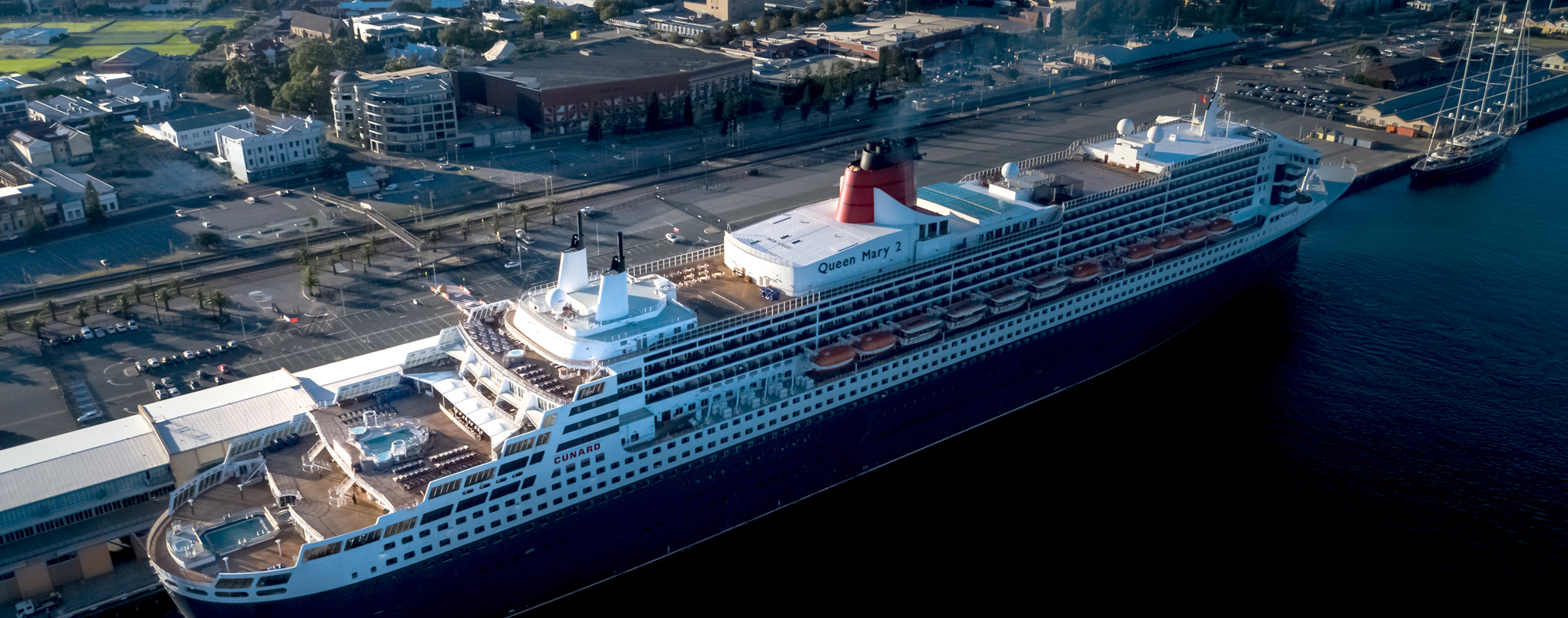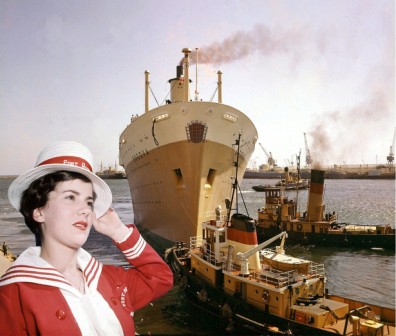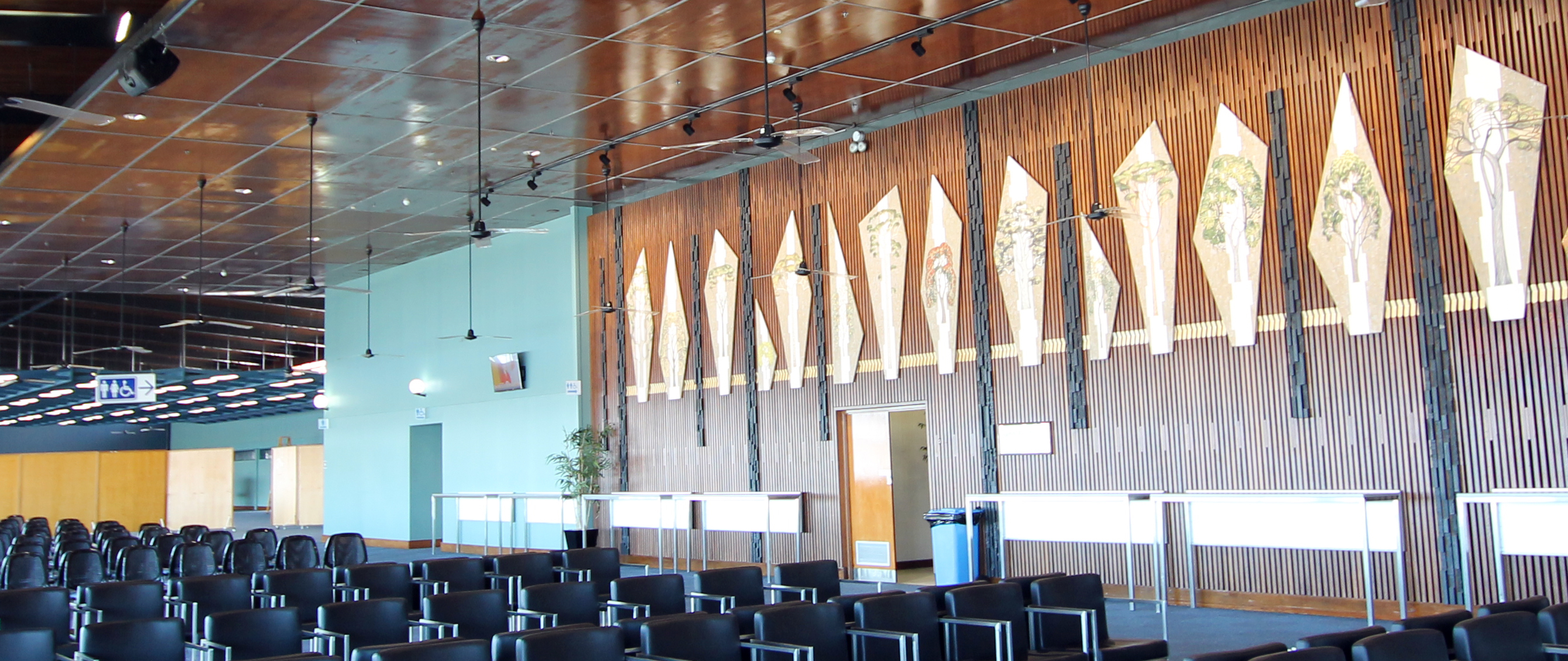The iconic building on Victoria Quay was opened in two stages in 1960 and 1962.
The two-level Fremantle Passenger Terminal was designed in what is known as the Post War International Style. This is characterised by simple, functional, largely unadorned structures with open spaces, large areas of glass and an emphasis on steel and concrete in the building materials.
Architectural firm Hobbs, Winning and Leighton were the consulting architects for the terminal in association with the Fremantle Harbour Trust. The builders were the Fremantle Harbour Trust and AT Brine and Sons, with 22 subcontractors involved.
The two-level building is of steel-framed construction with concrete panels. The upper floor is timber parquetry and Western Australian hardwood timbers were used extensively in the interior.
The first stage, servicing F Berth, was opened in December 1960 by the Premier, the Hon David Brand MLA. Between then and completion of Stage 2 at G Berth in May 1962, more than a quarter of a million passengers passed through the terminal.
The building at that time was described as the largest of its kind in Australia and the only passenger terminal in Australia with two-berth capacity. It was built for dual-purpose usage with capacity for cargo handling as well as servicing passenger needs.

Fremantle’s cruise sector today
With cruising now one of the most popular and fastest growing sectors of the tourism industry worldwide, Fremantle today is one of Australia’s most important cruise ship calls. Fremantle Ports is represented on the Australian Cruise Association, the peak body for cruising in Australia, and is working with tourism organisations and other ports to promote Fremantle and Western Australia’s attractions to cruise companies.
Some of the shipping lines base ships in this port during the cruise season. To ensure efficient handling of the large numbers of passengers coming through the terminal (up to 2000 embarking and disembarking from some of the larger ships), systems have been upgraded.
The Fremantle Passenger Terminal has undergone significant upgrading in recent years, with the work designed to be respectful of the heritage significance of this Victoria Quay landmark as well as improving security and visitor amenity.
For a comprehensive guide to the terminal’s history, read Fremantle Passenger Terminal 50 Years: Celebrating 50 years of arrivals and departures on Victoria Quay.

Port Authority hostesses
Well remembered as very much part of the scene at the busy passenger terminal of the 1960s, 70s and 80s are Fremantle Port Authority hostesses who played a significant role in assisting passengers and visitors. These immaculately turned out hostesses in their red and white uniforms all spoke at least two languages and needed to have a broad knowledge of Western Australia. They were an invaluable source of information as well as being available at times to take visitors on tours of the port. Fremantle was the first port in Australia to introduce such a service and the idea gained world-wide publicity, with several other ports following the example.

Heritage significance
The Fremantle Passenger Terminal was recorded in April 2000 in the Register of Heritage Places as a Permanent Entry by the Heritage Council of Western Australia.
The building was assessed as having significance for its aesthetic value as a design reflecting the architectural styles and values of the 1950s and 1960s, its landmark qualities from both the landward and harbour sides and as a significant 20th century feature of Victoria Quay.
Distinguished Western Australian artist Howard Taylor’s flora and fauna art works commissioned for the terminal are also acknowledged. Howard Taylor is regarded as one of the most significant Australian artists of the 20th century and the friezes of trees, plants, birds and animals painted for the terminal are important examples of his work. Other commissions of Howard Taylor’s art can be found in the Fremantle Ports Administration Building.
In terms of its historic and social value, the terminal’s association with the hundreds of thousands of migrants who came through Fremantle in the 1960s and 70s as a result of post-World War Two immigration is seen as significant. The terminal has special importance as the site of first landfall and first impressions of Australia for new settlers.
It is also associated with FWE Tydeman, General Manager of the Fremantle Harbour Trust from 1950 to 1963. He initiated and directed the modernisation, mechanisation and containerisation of port facilities during the post-war mineral and immigration boom.
Of heritage significance, too, is the social value of the Fremantle Passenger Terminal for its associations with holiday makers arriving aboard cruise ships.
A conservation plan prepared for Fremantle Ports by architect Ron Bodycoat was completed in 2001 and is being implemented in consultation with the Heritage Council of WA. Any work done to maintain or develop the building is required to be carried out in a way that does not diminish, destroy or conceal any of its significant elements.
Your visit
Explore what's on at Victoria Quay and start planning your visit by 'starring' the attractions, events, walks or anything else that interests you.
See what's on














